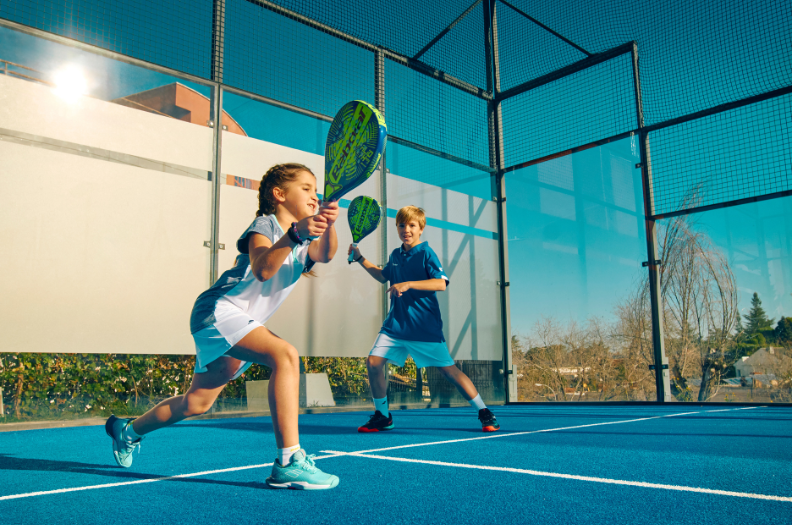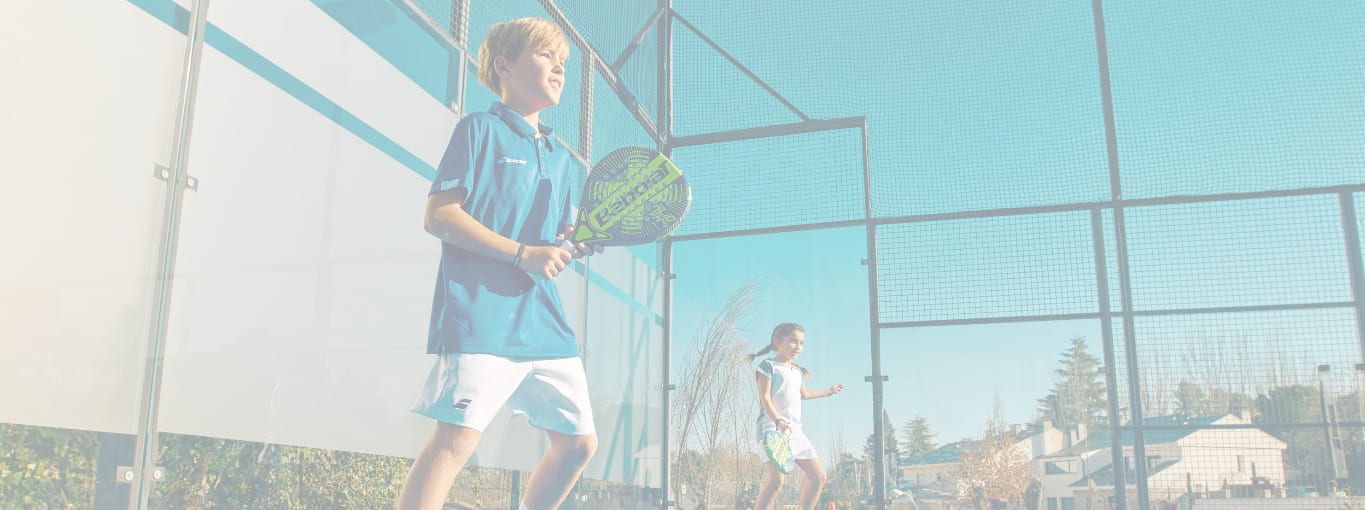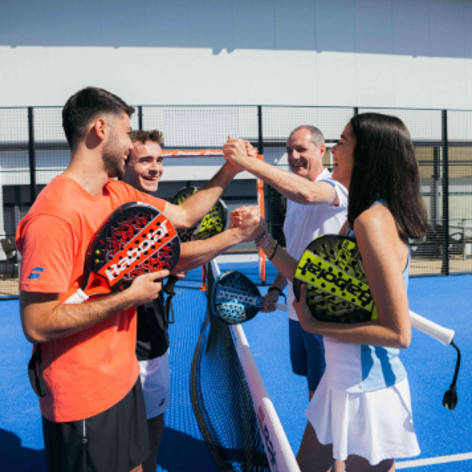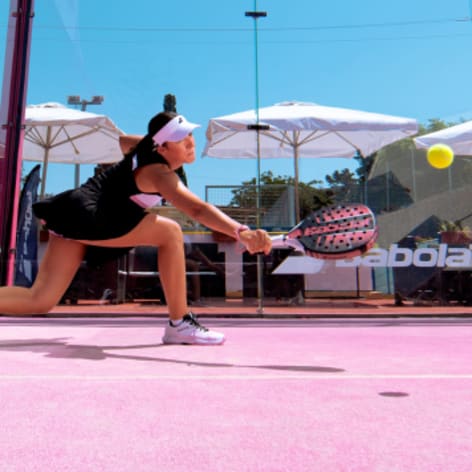Padel hitting technique is one of the essential fundamentals for progressing in this rapidly growing sport. Whether you are a beginner or an intermediate player, understanding and mastering the different shots will significantly improve your level of play. Choosing the right padel racquet is important, but without the proper technique, even the best equipment will not suffice.
Essential basics of padel hitting techniques
The success of your shots depends on three key elements: the racquet grip, body positioning, and timing. These basics form the foundation on which you will build your entire game. The ready position, knees slightly bent, body weight on the front of the feet, allows you to react quickly in all directions.
Knowing the basic rules of padel is essential. The main rule states that the ball must bounce in the opponent's court before hitting the glass walls. On the serve, it must be hit below the waist and bounce into the diagonal service box. These rules directly influence your hitting technique.
The racquet grip: hammer or continental?
The hammer grip (continental) is the technical foundation in padel. The "V" formed between your thumb and index finger is positioned on the left edge of the handle. This versatile grip allows you to execute most shots without changing hand position. To check if your grip is correct, perform a few practice swings: the transition between forehand and backhand should feel natural.
Body positioning and weight transfer
Weight transfer is key to a powerful shot. Your weight moves from the back leg to the front, accompanied by the rotation of the hips and shoulders. This kinetic chain produces a powerful and energy-efficient hit. The hips initiate the movement, followed by the shoulders, then the arm and racquet.
How to master the forehand in padel ?
Preparation starts by identifying the ball's trajectory: turn your shoulders, bring the racquet back in a compact motion. The hitting plane is slightly in front of your body.
Preparation and timing
Good timing results from synchronization between movement, preparation, and bounce. The ball should be hit after reaching the peak of its bounce, during the downward phase. The orientation and depth of your shot are determined immediately after impact. Follow through towards your target for a smooth and consistent stroke.
Common mistakes to avoid
The main mistake is hitting too hard all the time. A shot at 70% of your maximum power offers the best balance between speed and control. Another mistake is neglecting repositioning after the shot. Padel is a constant movement sport, so your ability to chain actions determines your effectiveness.
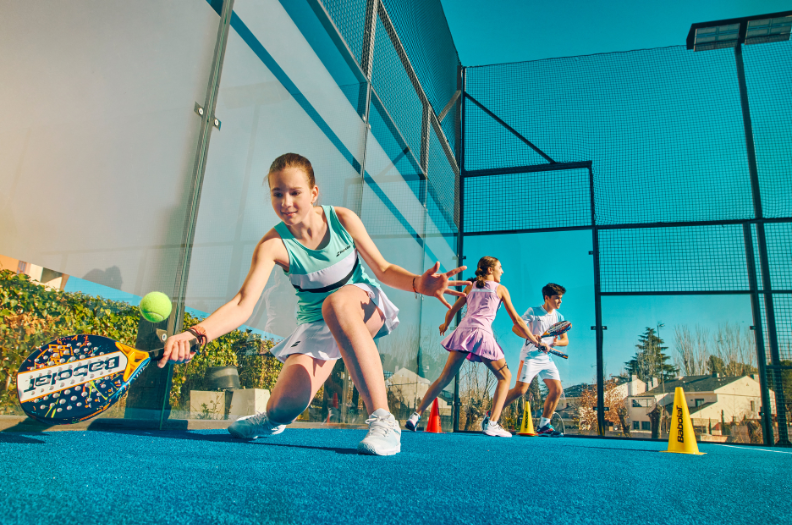
Learning padel: fundamental shots
Learning padel involves gradually acquiring the different shots. Each shot has its own technical specificity and tactical use.
The Serve: Spoon Technique
The padel serve is done with a spoon technique, below the hip, to place the ball accurately. Simply release the ball without throwing it, then hit it just after the bounce so it lands in the diagonal box. Vary the height and speed to surprise your opponent. Immediately after your serve, move quickly to the net to gain offensive advantage.
The Volley: control and precision at the net
The volley is a key shot in padel to maintain control of the game. Position yourself about one meter from the net, racquet held high in front of you. Favor a short, controlled motion, pushing the ball forward with impact in front of the body. To improve positioning, practice lateral movement while your partner varies their shots.
The smash: controlled power
The padel smash differs from tennis. Professionals like Juan Lebrón use specific racquets, but technique remains essential. The movement goes from low to high, hitting at the highest point. From the back, favor cross-court smashes. Closer to the net, attempt the “smash 3” that goes out after hitting the side wall.
Advanced techniques: bandeja and vibora
The bandeja and vibora allow variation in pace. These padel shots require precision and touch rather than brute force.
Mastering the bandeja
The bandeja is an intermediate shot between the smash and high volley, performed at head height with a lateral motion. It sends a tight ball that keeps the opponent at the back while minimizing risks. It is played on moderately high lobs when a smash would be too risky. Relax your wrist to add the typical slice effect of this shot.
The Vibora: power and spin
The vibora represents an aggressive evolution of the bandeja. Hit with lateral topspin, it produces a fast, dipping trajectory. The wrist performs a quick pronation to impart rotation. Diamond-shaped racquets facilitate this shot thanks to their head-heavy balance.
How to improve hitting power ?
Power in padel results from a combination of technique, timing, and physical conditioning.
Specific Strengthening Exercises
Core strengthening is fundamental. Include planks, medicine ball rotations, and leg raises. Legs generate most of the power: squats, lunges, and plyometric jumps develop explosive strength. For shoulders and arms, use resistance bands to simulate movements. Regularly test your range of motion to track progress.
The role of the racquet
Choosing a power-oriented padel racquet affects your ability to generate speed. Diamond-shaped racquets favor power, round ones favor control. If you are starting padel, it is better to choose a light racquet, between 355 and 365 grams, for better maneuverability and comfort. Before making your final choice, try several models.
Key takeaways on padel hitting techniques
Mastering padel hitting techniques combines technical learning, physical development, and tactical understanding. Progress comes from conscious repetition and constant adaptation. Focus on gradually acquiring each technique. Regularly testing your skills in matches allows you to measure real progress.
Above all, padel is a sport of enjoyment and social interaction. Technique enhances your game without complicating it. With regular practice and a love for the game, your progress will be steady. Respect the rules of fair play that make padel a friendly and accessible sport for everyone.
